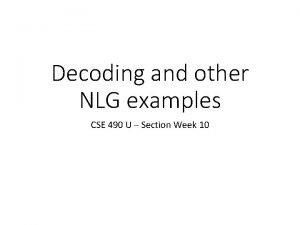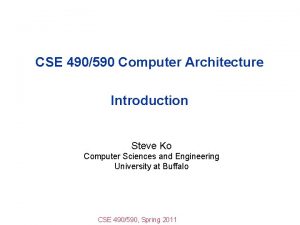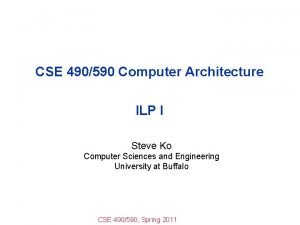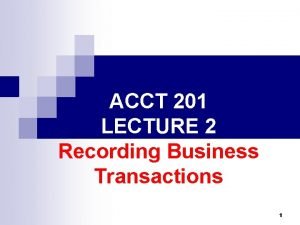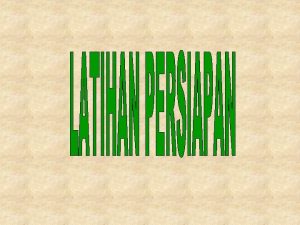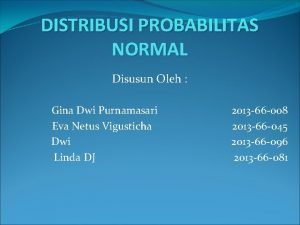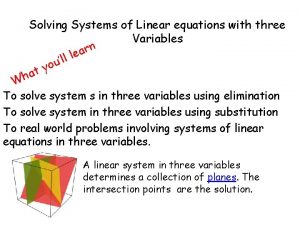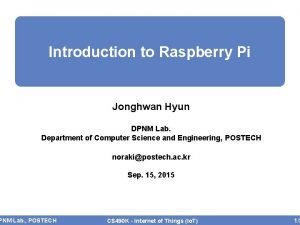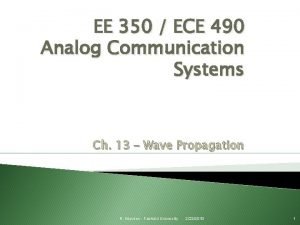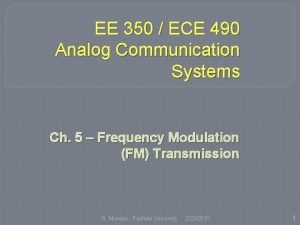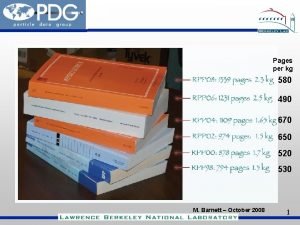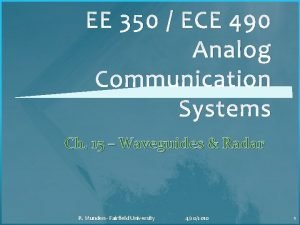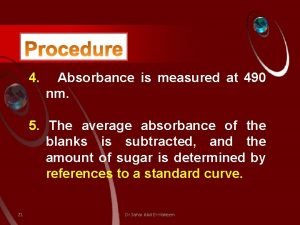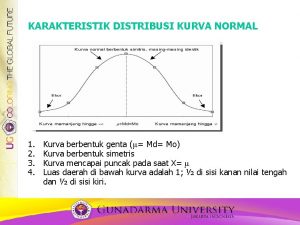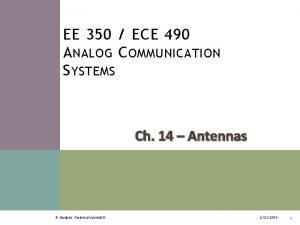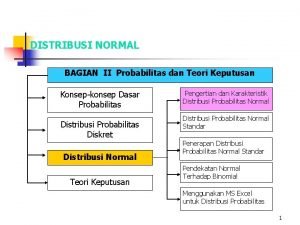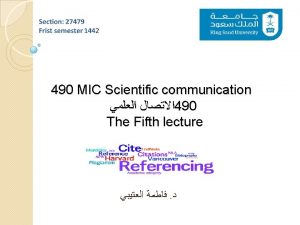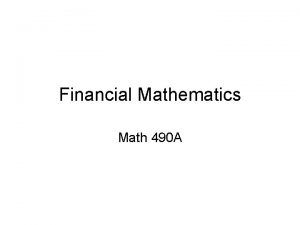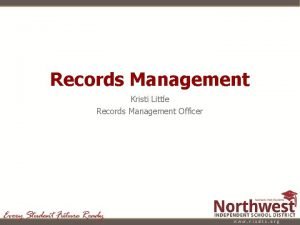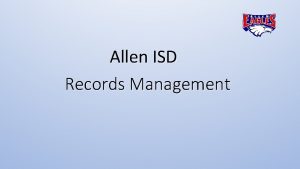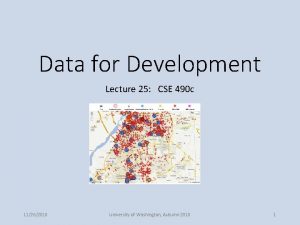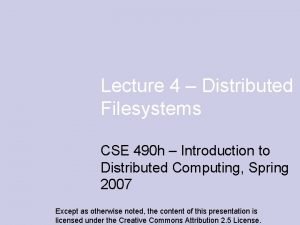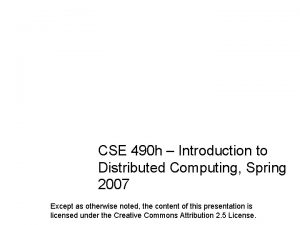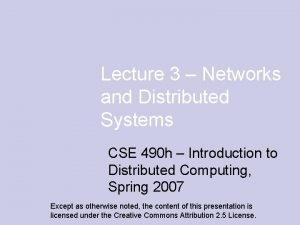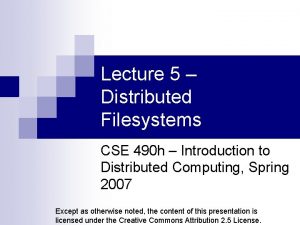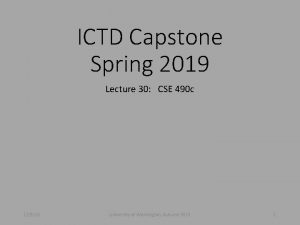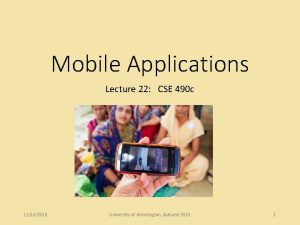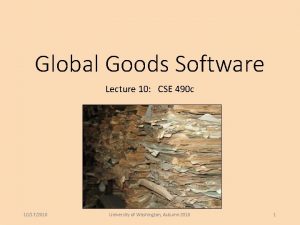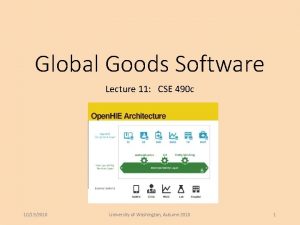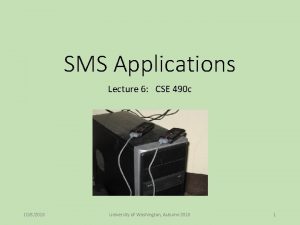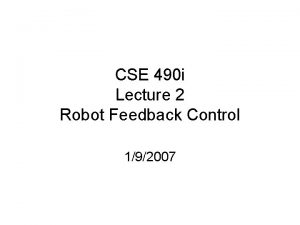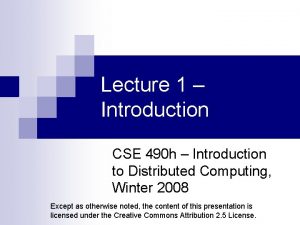Call Data Records Lecture 28 CSE 490 c






















- Slides: 22

Call Data Records Lecture 28: CSE 490 c 12/3/18 University of Washington, Autumn 2018 1

Topics • Data Science for Development • AI for Social Good • Today • Call Data Records 12/3/18 University of Washington, Autumn 2018 2

Announcements • Homework 7 Due Tonight • Programming Assignment 4 Due December 11 • You have received the teaching evaluation link. Complete evaluations by December 9 A high response rate is very important for meaningful results. We will send reminder emails to non-responders during the evaluation period. In addition, studies show that instructor involvement can increase response rates as much as 15 -20%. 12/3/18 University of Washington, Autumn 2018 3

Telco Information • Call Data Records (Call Detail Records) • Meta data on individual calls • Cell Tower Logs • Information of handset connections with towers • Cell Tower Locations 12/3/18 University of Washington, Autumn 2018 4

Access to cell phone data • Proprietary to Telco • Provide competitive advantage • Possibly for marketing or data services • Linkage with mobile money • Subject to government privacy regulations • Possible access to aggregated data 12/3/18 University of Washington, Autumn 2018 5

Reading for this week • An Investigation of Phone Upgrades in Remote Community Cellular Networks, Kushal Shah et al. , ICTD 2017 12/3/18 University of Washington, Autumn 2018 6

Call Data Records • Meta data associated with calls • Source number • Destination number • Source Tower (ID) • Destination Tower (ID) [might be missing] • Time • Duration • Status 12/3/18 University of Washington, Autumn 2018 7

Types of studies • How people use technology • Populations studies (where people are) • Event studies (what happens when) • Epidemiology studies • Economic studies Distinction between Aggregate Studies and deriving information about individuals 12/3/18 University of Washington, Autumn 2018 8

Working with CDRs • Preprocess data for higher level structure • Align data with other sources • Tower data • Economic / Population Data • Compute home location • Determine movement patterns 12/3/18 University of Washington, Autumn 2018 9

Call Graph • Directed or undirected graph on calls • Measurement of call volume • Detection of high indegree and out-degree nodes • Identification of social network 12/3/18 University of Washington, Autumn 2018 10

Call Graph Analysis • Global analysis versus individual analysis • Is the goal to understand aggregate properties or individual properties • Feature identification of individual’s calls • • • Number of calls Length of calls Missed calls Incoming vs out going Time of day Neighborhood • Frequent caller neighborhood • Nodes of distance two 12/3/18 University of Washington, Autumn 2018 11

Social Network Identification I • How do you identify a callers Social Network from a call graph? • Start with the Induced Subgraph on the Neighborhood of the individual 12/3/18 University of Washington, Autumn 2018 12

Social Network Identification II • Identify highly connected groups of vertices in Neighborhood Graph • Finding a maximum Clique is NP-Complete • Heuristics • Maximum degree subgraph • Maximum density subgraph 12/3/18 University of Washington, Autumn 2018 13

Degree-K Subgraph problem While there is a vertex of degree less than K Delete all vertices of degree less than K 12/3/18 University of Washington, Autumn 2018 14

Maximum Density Subgraph problem • Find an induced subgraph S that maximizes ration Edge(S)/Vertices(S) • Polynomial time algorithms using Network Flow techniques • Related to degree K subgraph problem 12/3/18 University of Washington, Autumn 2018 15

How good a predictor is the call graph of an individual's income? 12/3/18 University of Washington, Autumn 2018 16

Phone use studies • Given demographic information, study phone use behavior • Call volume, call timings (time of day, date), number of contacts • Studies of Sim Card Churn • Inference of demographics from behavior Mehrotra et al. (2012), Differences in Phone Use Between Men and Women: Quantitative 12/3/18 from Rwanda. University of Washington, Autumn 2018 Evidence 17

Migration Studies • Movement of people is an area of significant study • Lack of census data make this hard to study • Short term migration • What are the patterns • Is it possible to distinguish between shorter term and permanent migration • Forced migration and droughts • Match to climate data • Question on local versus long distance migration • Technical issues in definitions of movement 12/3/18 University of Washington, Autumn 2018 18

Blumenstock et al. (2015), Predicting poverty and wealth from mobile phone metadata Economic Studies • Predict economic status at a local (e. g. District) level • Household surveys are expensive. Idea is to use Cell Phone Data to expand surveys • Correlate household surveys with CDR • Compute wide range of properties of CDR • Construct machine learning model to predict household assets (from survey data) • Apply to all call records in the data set 12/3/18 University of Washington, Autumn 2018 19

Epidemiology • Correlating human movement data and disease frequency • Substantial work on Malaria and Call Data Records • Key use case is malaria elimination • Understanding if cases are local infections or from other regions • Understand movement from high incidence to low incidence areas • Technical modelling work that combines migration and economic studies 12/3/18 University of Washington, Autumn 2018 20

Event studies • Look at impact of events in data sets • High volume of calls related to disasters, elections, holidays • Spike in call volumes has been observed associated with earth quakes • Significant interest in call data records and disaster response • Technical issues related to infrastructure and economic displacement 12/3/18 University of Washington, Autumn 2018 21

Additional challenges on CDR Analysis • Countries often have multiple Telcos • Getting data from all Telcos is even harder • Is data from one Telco sufficient? • Increasing use of other media for communication • Encrypted messaging Apps such as Whats. App • Analysis of Social Media company data should be even more restricted than CDR • Aleksandr Kogan 12/3/18 University of Washington, Autumn 2018 22
 Nlg examples
Nlg examples Cse 490
Cse 490 490590
490590 Lecture records transaction in
Lecture records transaction in 01:640:244 lecture notes - lecture 15: plat, idah, farad
01:640:244 lecture notes - lecture 15: plat, idah, farad Dari 60 orang siswa ternyata 36 orang gemar membaca
Dari 60 orang siswa ternyata 36 orang gemar membaca Harga 3 lusin pensil adalah rp45.000 harga 32 pensil adalah
Harga 3 lusin pensil adalah rp45.000 harga 32 pensil adalah Kurva platykurtic
Kurva platykurtic 490 bce
490 bce 490 bce
490 bce A theater has 490 seats
A theater has 490 seats Raspberry pi lab manual
Raspberry pi lab manual Ee 350
Ee 350 Ece 490
Ece 490 650-520
650-520 Skr03 490
Skr03 490 Ece 490
Ece 490 Ch 490 study guide
Ch 490 study guide Absorbance 490 nm
Absorbance 490 nm Contoh soal probabilitas pendapatan perkapita
Contoh soal probabilitas pendapatan perkapita Ee 350
Ee 350 Harga saham di bej mempunyai nilai tengah 490 7
Harga saham di bej mempunyai nilai tengah 490 7 Sfu databse
Sfu databse
